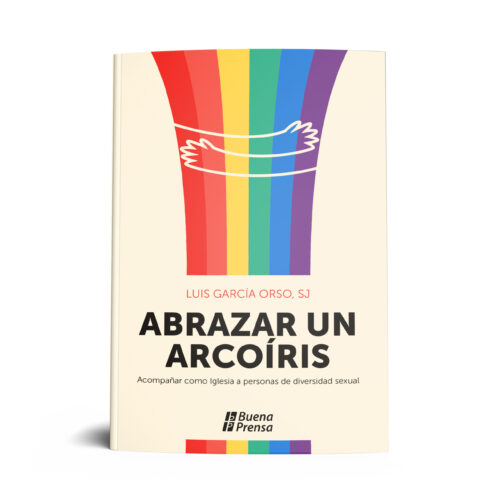This is the first of a three-part series on new policies on gender identity and sexuality that have been issued by Catholic dioceses in the United States. Outreach previously published an overview of several policies last June.
Last summer, we saw several Catholic communities at odds over a new wave of sexuality and gender-identity policies, in the Dioceses of Green Bay, Wis.; Lafayette, La.; Sioux Falls, S.D.; and Omaha, Neb.
This year, two more policies were promulgated by the Dioceses of Des Moines, Iowa and Portland, Ore. In conversations about possible responses to these policies, one colleague of mine in Catholic secondary education called them “spiritually bankrupt.” Another deemed them a “big pastoral mess.”
Pope Francis wrote in Evangelii Gaudium that “the church which ‘goes forth’ is a community of missionary disciples.” The way forward, then, is to embrace the methodology of Jesus Christ, which means to encounter people, accompany them, integrate them into the larger faith community and send them forth to “make disciples of all nations” (Mt. 28:19).
As the church’s worldwide synod continues, it is important to ask: How are we embracing the synodal themes of mission, participation and communion?
Last June, in an earlier article on U.S. diocesan policies, I suggested that dioceses need to rethink the process by which sexuality and gender-identity policies are written for Catholic schools. Many months later, there are now well over 30 dioceses with identified policies. These policies, as I see them, mostly lack a foundation in lived experience and pastoral care, which ultimately hinders the work of evangelization being done in Catholic schools.
While Catholic doctrine offers us a defined, systematic and theological approach to the world, the application of doctrine is necessarily affected by myriad variables that call for discernment when working with people facing real-life challenges. Church leaders thus face a dilemma: Look the other way when it comes to the pastoral ministry being done to support LGBTQ students and their families, or respond to these challenges and initiatives with the urgency and force of authoritative, and often restrictive, policies.
In the Gospel of Luke, Jesus heals a woman who is “bent over” with an infirmity (13: 10-17). Moved with compassion, he says, “Woman, you are set free” and then lays his hand on her shoulder. This is an example of the pedagogy of Christ: “I have given you a model to follow, so that as I have done for you, you should also do” (Jn. 13:15).
There is a clue here for those who teach the fundamentals of our Catholic faith. The best teaching happens through personal encounters, which are encounters of love—not tough love, but encounters characterized by what Pope Francis calls “tenderness.”
In contrast to this more relational model of catechesis, we continue to see signs in Catholic education that point toward a more didactic, even apodictic, model of instruction—more along the lines of apologetics. This emerges particularly in the debate over how to speak about sexual orientation and gender identity, and flows even into decisions over the words and letters we use.
As the church’s worldwide synod continues, it is important to ask: How are we embracing the synodal themes of mission, participation and communion?
Unfortunately, this issue has become so polarized in the American church that it feels like we have to make a fool’s choice between truth and love, or between right belief and right action. Under this increasingly polarized model, persons in “irregular” states of life can choose to live within the boundaries of Catholic doctrine or they can choose to leave and find a different spiritual home.
As written in the gender-identity policy of the Diocese of Des Moines: “[Families must] respect the Church’s mission to witness to truths accessible to reason and faith if they are to fully participate in our faith communities, including our Catholic schools.” But to this point, the Vatican’s Congegation for Catholic Education states, “In [some] schools there is no room for those who are not ‘totally’ Catholic. This approach contradicts the vision of an ‘open’ Catholic school that intends to apply to the educational sphere the model of a ‘Church which goes forth.’”
In his book Between Man and Man, Martin Buber, the Jewish philosopher, defined dialogue as “living in the tension of the narrow ridge” between absolutes and unknowns. I find that image of the narrow ridge very helpful.
On one hand, the Congregation for Catholic Education suggests that Catholic schools are “responsible for ensuring respect for the life, dignity and freedom of pupils and other members of the school, putting in place all necessary procedures to promote and protect minors and the most vulnerable.”
On the other hand, the Dicastery for the Doctrine of the Faith stated, in 1986, that “[d]eparture from the Church’s teaching, or silence about it, in an effort to provide pastoral care, is neither caring nor pastoral.” At the current moment, rather than engaging in a meaningful dialogue that holds these two positions in tension, we are experiencing an escalation in rhetoric that is dividing the People of God.
Locked in conflict
As new policies continue to emerge, words are “setting forests ablaze” (Jas. 3:5). The Diocese of Sioux Falls admits that their policy on the liturgy, which bars transgender Catholics from serving at Mass, is “intentionally exclusionary,” but says “the Catholic school’s mission and its responsibility to all parents shall at all times be viewed as the greater consideration than a school administration’s concern for any one student.”
How does this reconcile with the consistent ethic of life, in which care for many does not outweigh care for the one? The Parable of the Lost Sheep shows that abandoning even one child would serve as a counter-witness to the Gospel (Lk. 15:1-7). This is another example of the closed mindset rebuked by the Congregation for Catholic Education which reminds us, “We must not lose our missionary impetus [and] confine ourselves on an island.”
For those who do not conform to the expectations of their diocesan policy, the Diocese of Sioux Falls asserts that “all Christian faithful have a duty to understand that there is no right to attend Catholic schools.” That opinion applies to students, parents, employees and guests “as a condition of their presence at Catholic school facilities.” These policies, they say, are in place as “a compilation of what the Church teaches us to be.”
Similarly, in the Diocese of Lafayette, full cooperation with and enforcement of their policy are “deemed a spiritual mandate.” But what are we to make of the Congregation for Catholic Educations’s vision that a Catholic school “is a school for all”? We need more universal and cohesive guidance.
Pope St. Paul VI wrote in Evangelii Nuntiandi that we must have “respect for the religious and spiritual situation of those being evangelized. Respect for their tempo and pace; no one has the right to force them excessively. Respect for their conscience and convictions, which are not to be treated in a harsh manner.”
The Parable of the Lost Sheep reveals that abandoning even one child would be a counter-witness to the Gospel.
Later, Pope John Paul I, during his brief papacy, said, “It is God’s law that one cannot do good to anyone if one does not first of all wish him well.” Pope St. John Paul II, wrote, “Inculturation needs to be guided and encouraged, but not forced,” and Pope Benedict XVI invited all people of good will to promote “a culture of respect, dialogue and friendship.”
Pope Francis, in Christus Vivit, his apostolic exhortation on young people, wrote that “we need to use above all the language of closeness, the language of generous, relational, and existential love that touches the heart, impacts life, and awakens hope and desires. Young people need to be approached with the grammar of love, not by being preached at.”
The last five popes have all identified this “spiritual mandate” of the new evangelization, yet this influence of the Holy Spirit seems lost in the tenor of many emerging policies.
In the Diocese of Green Bay, for example, “expressing a gender discordant with one’s biological sex” and “homosexual activity” are named as grave offenses against chastity and marriage. Other listed offenses include lust, masturbation, pornography, fornication, adultery, cohabitating in a sexual relationship outside of marriage, voluntary sterilization, artificial contraception, in vitro fertilization, procuring an abortion and sexual abuse.
But if grave sin requires full knowledge and complete consent (CCC 1859), then how can the correlated effects of gender dysphoria in a young person be grouped with intrinsic evils like adultery, abortion and sexual abuse?
Dress code policies
On a more granular level, diocesan policies continue to wade into areas like dress codes, in order to protect gender norms:
- “Students are to wear only those uniforms and conform to all dress codes in accord with his or her biological sex.” (Sioux Falls)
- “It is the policy of the Diocese of Green Bay that all students, staff, and faculty [and volunteers] must follow the dress code expectations of their biological sex while on campus and while representing the school at outside functions.”
- “All students shall conduct themselves in accord with their God-given biological sex as it relates to the use of personal pronouns, dress code, use of public bathrooms and participation in school-sponsored activities.” (Omaha)
- “All persons are to ordinarily present themselves in a manner consistent with their God-given dignity. Where a dress code or uniform exists, all persons are to follow the dress code or uniform that accords with their biological sex.” (Des Moines).
The general purpose of any dress code is to acculturate students to expected standards of social presentation. Behind dress codes are virtues like neatness, cleanliness and modesty, which may “inspire one’s choice of clothing” (CCC 2522).
But the Catechism also notes that “the forms taken by modesty may vary from one culture to another” (CCC 2524). Rather than appealing to respect for self and others, or allowing for gender-neutral options, most diocesan policies reinforce traditional gender and culture roles concerning fashions.
Rather than appealing to respect for self and others, or allowing for gender-neutral options, diocesan policies reinforce traditional gender and culture roles concerning fashions.
This inevitably leads school administrators into conflicts with students and families over matters like hair length, hair style, nail polish, makeup, earrings, piercings, clothing colors, fabric patterns, tattoos, pants and shoes.
The Diocese of Green Bay goes further:
A member of the diocesan school community who wishes to express a gender other than his or her biological sex is understood as operating outside of the “reality deeply inscribed” within. Assisting the person in his or her disconnection with this reality, however sincerely experienced, by agreeing to participate in any efforts to change natural gender expression is contrary to the pursuit of the truth.
To demonstrate the short-sightedness of such policies, consider St. Joan of Arc, who cut her hair short and wore a man’s clothes and a suit of armor (“The clothes are a small matter,” said Joan at her trial, “the least of all things.”)
There is also St. Galla of Rome, a widow who grew a beard to throw off future courters, and St. Marina the Monk, who disguised herself as a man to live an ascetic life in a monastery.
According to the diocesan policies mentioned above, each of these women obstinately persisted in manifest grave sin and would not be welcome in some Catholic schools. Their gender-nonconforming behaviors specifically violate these schools’ current policies.
Paradoxically, after declaring that “all persons should abide by the dress or uniform code that accords with his or her biological sex,” the Archdiocese of Portland later suggests in the same document “there is great freedom and diversity in how masculinity and femininity are lived out in the world.”
In the next part of this article, the author will discuss mental health challenges faced by LGBTQ youth.



